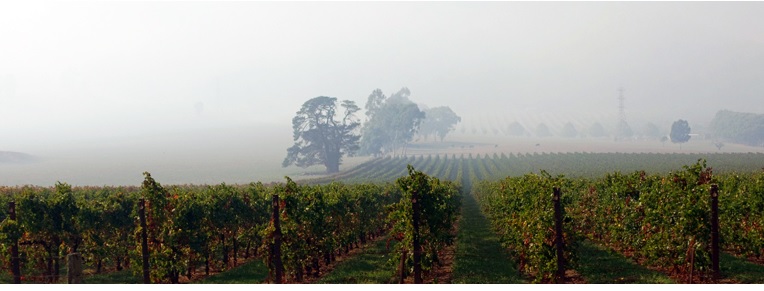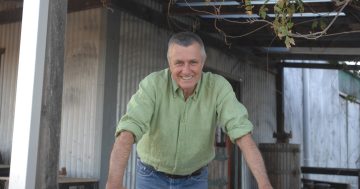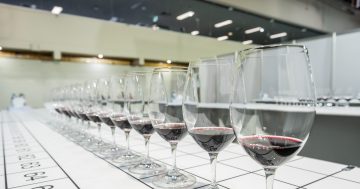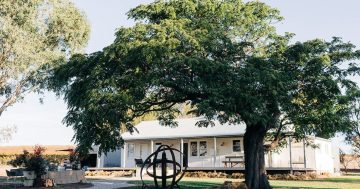
Recent summer bushfire smoke has forced many vignerons to dump their tainted crops. Photo: University of Melbourne.
Any hopes of a 2020 vintage from Tumbarumba, Hilltops, Gundagai or Canberra appearing on a shop shelf near you have just about gone up in smoke in the past two months.
As vignerons endured extreme drought, fires became their next nemesis, particularly for those close to Canberra and Tumbarumba.
Those who survived the flames were faced with another formidable foe in the form of thick smoke that shrouded much of NSW and the ACT.
The result was smoke taint – a smoky, burnt ashy character inflicted on wines made from smoke-affected grapes, which is akin to licking a dirty ashtray.
This trifecta of trouble had already seen many of the region’s vignerons dump their crops and their vintages.
NSW Wine Industry Association executive officer Angus Barnes said, across the state, vineyards were impacted by unprecedented amounts of smoke during 40 days of the key growing season.
“NSW has 16 wine-growing regions and 12 of them were severely impacted by smoke.
“As you get closer to vintage, the effects of smoke have a bigger impact on the vines and that’s certainly the case across Tumbarumba, Hilltops and Canberra. The Riverina, Murray and Murray-Darling have been least impacted and that’s a good thing because of the volume of grapes they produce.”
But Tumbarumba, Hilltops and Canberra equates to 30,000 tonnes of grapes and around $30 million in revenue.
“If you turn that into wine and wine tourism, that’s well in excess of $100 million in lost revenue,” said Mr Barnes.
“When we started this process, the assumption going in was if the fires were more than 25-50km away from the vineyards, the chances of smoke doing damage to the vines would be relatively minimal. We now know that not to be the case.”
Around 1000 grape samples taken in NSW wine growing regions from December to March tested by the Australian Wine Research Institute were deemed to have either minimal, low-range, mid-range or high-range smoke impact.
“But different varieties have different susceptibilities to the effects of smoke,” explained Mr Barnes. “So neighbouring vineyards with the same grape variety might have wildly different scores depending on which direction the wind blows or because of the way the vineyard is situated.
“The Hilltops, I would suggest, has been significantly impacted. They haven’t been decimated like Canberra or Tumbarumba, but I think a significant amount of grapes were rejected either by the person who cut them or once they were tested.
“I think there will be very little wine to come out of Tumbarumba this year, although it has the advantage of lots of valleys and gullies so there may be some.”
If all that wasn’t enough, many fire-affected producers have not been able to access critical support from federal and state governments due to ongoing debate about classifying the effects of smoke as being part of the bushfire damage.
“I think it’s clear to everyone that the smoke that damages grapes is a direct impact of the bushfires,” said Mr Barnes. “The government has now recognised that and included the effects of smoke as being [part of] the definition of a bushfire activity.
“That avails the industry to the grants and loans that are available through federal and state governments.”
But the one big caveat, says Mr Barnes, is that these grants and loans can only be claimed if your vineyard is in a bushfire-declared local government area (LGA).
“In NSW, there are four areas where this is a big issue – Hilltops, Orange, Cowra and parts of Canberra – regions not declared bushfire-affected because the fires weren’t in them, but the smoke shadow came across them and destroyed the grapes,” he added.
“That’s frustrating and disappointing, and it means there are some growers in these areas who are particularly going to be under pressure because they’ll have no income between now and next vintage, which is 12 months away.
“Frankly, I think I am working three disasters behind because obviously now we’re dealing with COVID-19 and that is presenting a new range of unprecedented challenges.”
In the absence of cellar door sales, Mr Barnes is encouraging people to support wine producers through their websites.












